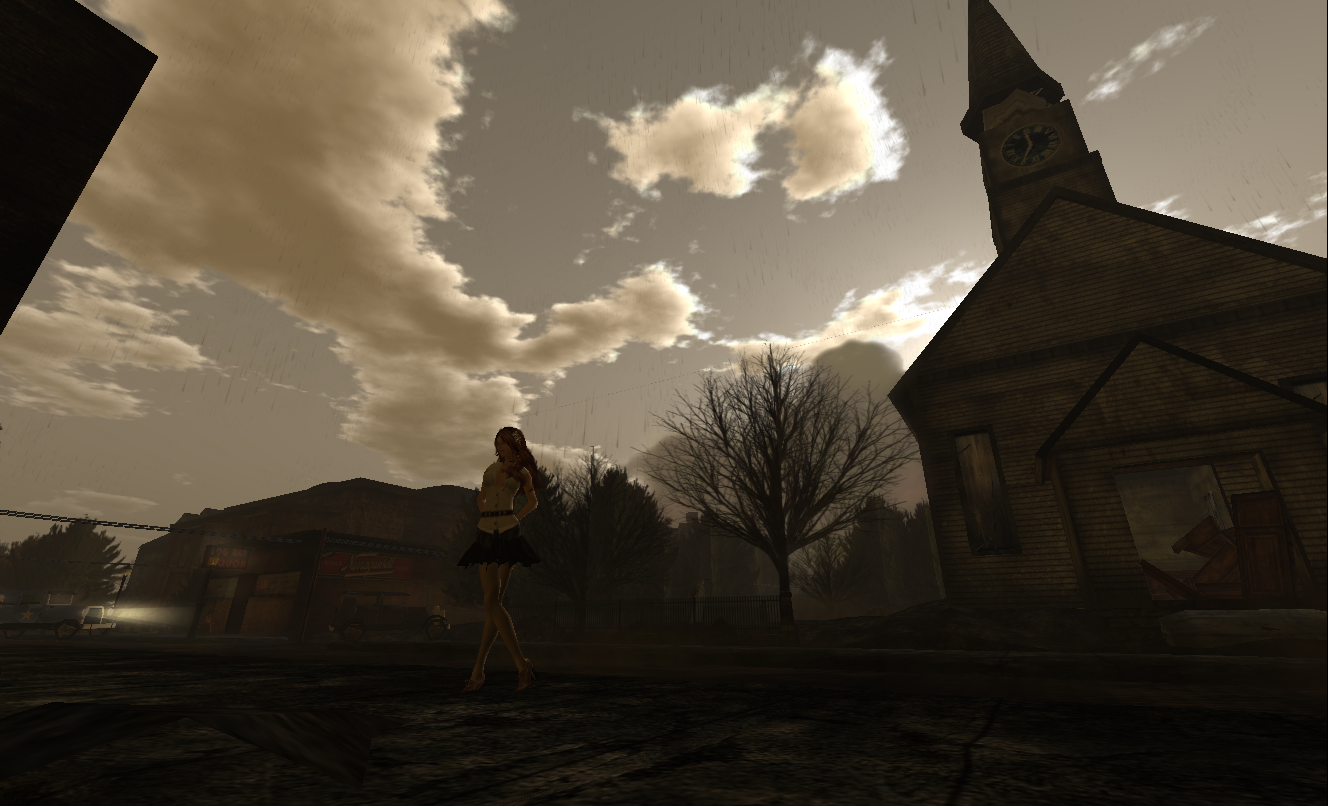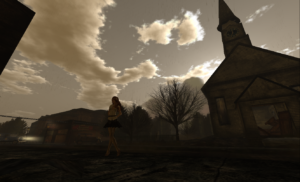
SL Bloggers usually publish their 2012 wishlist (and an analysis of 2011) around this time of the year. Well, I’ll skip it for 2012. Doomsayers might claim that if even Gwyn cannot make predictions, then SL is truly and utterly doomed…
I prefer to see it from the reverse perspective. When something is way too difficult to predict, it usually means that so many things are happening at the same time, with Linden Lab shooting all around themselves, hoping to hit at least one target, then it’s hard to figure out what direction SL will take next year.
There are two things that definitely will have an impact in SL overall during 2012. First, photo-realism is here. No more will SL be seen as a “lesser” platform to create stunning, hyper-realistic 3D sets, as this example from Hamlet Au shows so well. This means that at least for high-end computer owners, SL is going to be remarkably closer to other high-end “games” out there, and this will mean builders will be able to do the unthinkable. For people with computers like mine, it just means being able to do nice snapshots and be content with whatever I can still render at 3-4 FPS 🙂
Of course mesh isn’t perfect yet; of course there is a lot of work to be done until it becomes flawless; of course there is a lot of tinkering to be done with Qarl ex-Linden’s mesh deformer, which finally will get at least mesh dresses to fit avatars. But the technology is reaching maturity fast. And this means that yet another constraint on creativity will be lifted, with the result that at least builders will be happy. This is a bit like betting on the ancient formula “if they build it, people will come” — which we all know to be flawed — but nevertheless it’s better than the alternative: being stuck with a 3D environment which looks ten years out of date. No more.
The second thing is this strange push towards “gamification”, or, put into other words, “back to the roots”. When SL was announced, even before the public Beta, it was claimed to be a platform for 3D game designers which would be easy to use, simple to develop, and flexible enough, for both amateurs and professionals. After a few years that whole concept was just laughed at, and people just continue to do what they wanted to do in SL. Nevertheless, the RPG crowd never gave up on SL — the temptation to design your own RPG “just like you always wanted it” was way too high. Games always popped up in the headlines, from the ancient days of SLingo and casino games to chicken breeding using old machines. I miss the old machines. Somehow, the game design spirit in SL never died, even though the platform was hardly appropriate for that.
Strangely, though, the LL board opted to hire an expert in conceptual game design for their CEO, and ask Will Wright to be part of the board. This has consequences. I’m still very, very skeptical about how SL can compete as a “game platform” (compared to, say, Unity 3D) but the truth is that it’s already as close as one can possibly get to an “ideal” multi-user, user-content-generated, generalistic game platform. It’s just, uh, twenty years ahead of time — or behind, depending on your perspective — and the big question is how long LL can keep SL running until it really catches up as a gaming platform.
Nevertheless, the Linden Realms game seems to have attracted some success. I was expecting it to become a complete and utter failure, but apparently, people are playing it. SL game designers are excited to be able to get their hands on the new LL tools allowing things like automatic HUD attachments and the announced NPC programming tools. How all that put together will turn SL into a feasible platform to develop the next Half Life 2 “killer application”, and, more importantly, allow game designers to turn a profit from it (considering the nightmarish cost of leasing hundreds of regions to run a large-scale game able to “compete” with established MMORPGs) is anyone’s guess. Even if LL slashed the costs to merely a tenth of what they charge today this would still be unfeasible (compared to the alternatives) — and no matter how fast your graphics card is, you simply cannot walk into an area with hundreds of avatars and NPCs and lots of meshes and expect SL to provide you with the smooth lag-free experience of other platforms. We’re simply not there yet — not in 2012, and probably not in 2020 or even 2030, at the current pace of LL development.
So what’s the alternative?
Frankly, I don’t know. A professional 3D designer I randomly met in SL the other day told me something interesting: he was just developing content for sale in IMVU, because there are no overhead costs — no need to lease land, no need to build shops, no need to advertise (which is so hard to do effectively in SL). Just publish your content and see the cash trickling in. I wondered why he was logged in to SL at all. He answered: “Oh, this is my sandbox: this is where I have fun.”
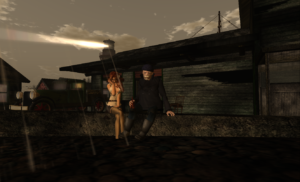
This certainly seems to be the case for many professional artists. When I visited the Innsmouth region (a depiction of the fictional New England city from H.P. Lovecraft’s The Shadow Over Innsmouth novella), I got the distinct impression that this was merely a work of love. Yes, there is a store somewhere in the middle of the region, but I’d be hard pressed to believe they make enough money to pay for the sim lease. The donations are less than a regular life performer makes in a good day (or a bad week). So what drove the builders to create such an amazing environment — just one among the hundreds or perhaps thousands that are all over the place? Innsmouth is not even a new region: it has been around since at least December 2009. So someone has been paying tier for two whole years in return for — what?
Probably not much. Probably just for sharing the fun of having built it. And this is something very notable and unique about SL: sometimes, things get built just because people like to build. There is no business model behind the build. There are not even many visitors (actually, Innsmouth seems to always have a handful of people around — better than many other always-empty places). It’s not used for advertising (“hey, look at the cool things I know how to build in SL, hire me!”). To the best of my knowledge, nobody turned it into a RPG scenario — even a simple hunting game would have been fun (there is so much to explore!).
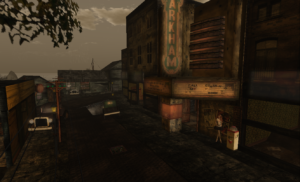
But this never stopped people from building. They just have fun doing it.
You can see from places like this — and there are so many around! — that this wasn’t built by amateurs. Most often, the creators are semi-anonymous, probably known only to their friends and fans, and possibly by some of their items sold here and there. In reality, I seriously suspect them to be professionals between jobs. They might have been hired to do a recent game for Big Fish Games and had lots of ideas on how to do something different… but while they wait to get hired again, they log in to SL and have some fun experimenting with their ideas. What they’ve earned from past jobs allow them to keep paying tier for their sims.
This is obviously just wild speculation… but it’s not just graphical artists that “take a rest” and go have fun on their sandboxes between assignments. Professional writers, like journalists, have their own blogs, too. Or their Facebook pages. And between two assignments, they might be busy blogging. Their articles on their blogs, free from editorial constraints, might even be more interesting than their regular work, but they will still be professionally written, because that’s how they have learned to write.
Similarly — perhaps — professional game designers and 3D content creators might just go to SL to relax, and create fantastic environments as a hobby. SL scripters have done so for ages. Even Qarl ex-Linden didn’t stop tweaking the SL viewer after having been fired by the previous management — of course he could only do it “in his spare time between assignments”, and thus not at the same speed as if under a contract, but the resulting code would have the same quality. How could it be otherwise? A professional programmer writes professional code, either for fun or as their job.
I have no idea if the “future of SL” will rely on these people, or if the overall model is enough to sustain SL forever and ever. Again, I’m just wildly speculating. But with very few exceptions, the major designers in SL are all professionals. We’ve outlived the glorious days of 2005 or 2006, when retired seniors or housewives with way too much empty time at their homes were the major content developers in SL, just because they had little else to do, and were willing to learn the building tools. Since there was little professional content around, they thrived. These days, however, we’re surrounded by professional content — and it’s clear that not all of it (perhaps not even most of it) is made for profit. Most of it is just made for fun.
Perhaps Rod Humble has realised that, and is willing to push Second Life as a “hobbyist platform for professionals”. Like a testbed for new concepts and ideas that can be deployed relatively easily and exposed to a curious audience first, before turned into a “professional” game. I mean, where do game designers test concepts? Developing a game prototype that is actually played by a group of alpha testers is as expensive to create as the game itself; the industry relies on “feeling” to know what will work and what will not (or just copies existing successes and improve them slightly — just like in the movie industry). There is no “playground” to test concepts.
In the early days of science fiction and fantasy — starting with the first pulp stories — writers would publish short stories to magazines with a reasonable audience of fans. If the short story became a huge success, they might be able to sell the idea to a book publisher, and expand a 15,000-word-story into a 200,000-word-novel. At least until the late 1990s, this was a common procedure (I lost touch with the SF&F fandom around that time). This enabled authors (and their publishers!) to test the waters, so to speak, with novel ideas, different styles, new environments, new ways of writing, and see what the public liked. The successes would even get awards (like Hugo, Nebula, and so many others) and often turned into books — or even movies. This model was (is?) not completely stupid: if you’re too innovative, you might have a difficult time pitching new concepts to publishers. Authors like H. P. Lovecraft would have been completely missed if he didn’t try out his ideas first on those magazines of the early 1930s.
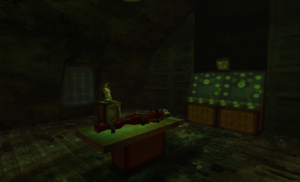
So perhaps this is what Linden Lab is after. Will Wright’s Spore, which was announced at some point as a “SL killer” (because you could, to a degree, create your own “critters” and share them with friends — e.g. leverage on user-generated content and its distribution via the Internet), was not a huge success. But perhaps Will Wright noticed something weird: the top “critter” designers were often SL designers, and some of their “critters” were turned into avatars in SL. Why? Because apparently professional 3D modellers and artists like to have fun in SL, and, in their spare time, just log in to upload their amazing content. Perhaps this gave Rod and Will the idea that SL could be used as a testbed for conceptual, creative purposes. Spore II or Half Life 3 might not be designed in SL — because it lacks the smoothness of play demanded by modern gamers — but what stops a company from testing out new ideas, new concepts, new designs, quickly assembling a simple MMORPG from scratch, and see what SL residents have to say about it? It’s not only about MMORPGs, of course; adventure/hidden object games, so popular on Big Fish Games, or things like chicken breeding, are excellent conceptual models that can be very easily tested out in SL with relatively low cost and quickly enough. You can even use near-to-finished designs and shoot a machinima — and get a cheap trailer for an upcoming game in a few weeks, that might take 2 or 3 years to fully develop.
In this era of financial constraints, it makes a lot of sense not to waste too much money on products that the public will not buy. It’s quite reasonable to assume that doing a “test” case for a novel idea first, and see what the public thinks about it, makes more sense. On top of allowing all that, SL also allows designers to get in touch with each other, see each other’s content, visit each other’s builds — and thus get a sense of what others are doing and what inspires them.
Is this the road that Rod (and Will) are planning to take with SL? Maybe. Announcing SL as a “prototype environment” where lots of game designers regularly come to test their concepts might attract a huge crowd of gamers — gamers that will not have the false expectation of encountering a smooth, lag-free experience in SL, but, by contrast, they will be expecting something rough and crude. But they will still come. As the gamer forums and conventions show, these people are always eager to be “the first ones testing a new game”. Joining SL just to be able to see some game designers and modellers at work, and see what they’re coming up with, years before the finished product is actually released, might be a strong incentive to join SL — and to stay.
After all, those professional game designers and content creators already are in SL. They never left. They are still happy building fantastic new environments out there, for us residents to enjoy. And, strangely enough, they don’t seem to be worried about financial issues. Like a journalist happily paying for hosting their own blog — even though they don’t make any money out of it — perhaps 3D modellers are more than happy to pay tier just to have a sandbox to have some fun. And perhaps sell an item or two in the mean time — also more for the fun of it, and less for the eventual profit.
Who knows? All I know is that 2012, like all years before, looks interesting enough to me. The only difference is that, this year, it’s for me very hard to predict what is going to happen.
Then again, I usually failed all my past predictions (with few, obvious exceptions), even though I was far more certain about them 🙂 In that sense, at the end of the day, what’s the difference?
Innsmouth was created by Darmin Darkes and can be visited by clicking here. It was reviewed on the SL official blog and is part of the Destination Guide.

